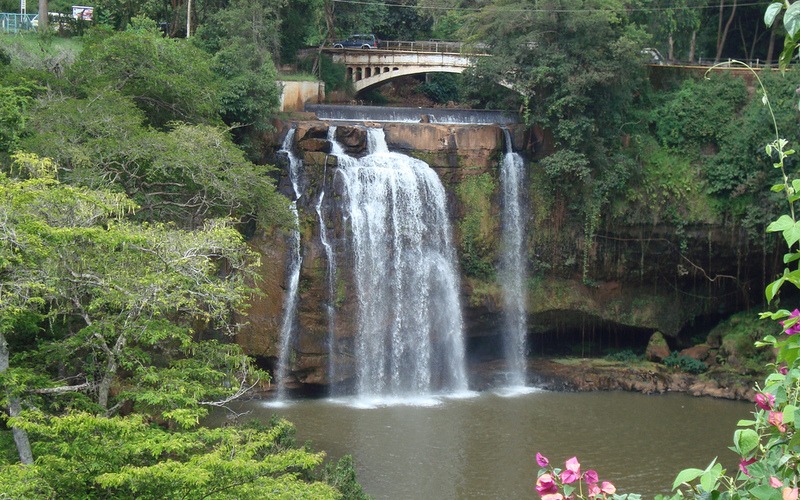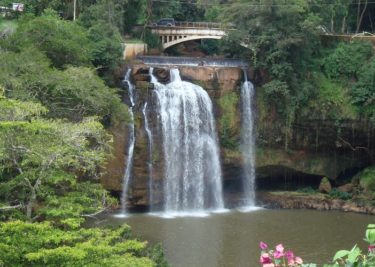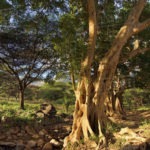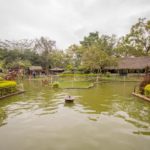Thika Town, Kenya

Image Credit: Twenzetu
The original Kenyan crossroads, Thika has had a long history of being a melting pot of the region. Blessed with two major rivers with waterfalls, the Thika and Chania rivers traverse the southern Gikuyu territory from the Aberdares mountains before merging into one river thereafter called Thika which gave the town its name. This point is next to the Blue Posts Hotel strategically built just before their meeting point. Thereafter, the river proceeds southeast to meet the Sagana river as it winds on to become the mighty Tana River.
Another waterfall in the area, named Fourteen Falls by the white settlers, is not on this river system but on the Athi river as it made a futile effort to join its big brothers but was rebuffed by a hard granitic rock formation, unabashed it turned east toeards the Indian Ocean.
This area first drew together the Akamba, Kikuyu and Maasai communities eager to enjoy the fresh water and vegetation at the merging river points for their huge livestock herds, kicking off Thika’s role as a mingling point centuries ago. By the turn of the 19th century, new communities started springing up with the arrival of Arab traders, English colonisers and later Indians and Somalis. By the time some settlers were trying to traverse further north between 1895 and 1905 it was a significant stop over from Nairobi by travellers moving slowly in bull-drawn carts.
In 1901, it got its first mkahawa (hotel) and seven years later its first modern hotel – Blue Posts Hotel – so-called for the bright blue posts that would signal to weary travellers from all directions that comfort was close, a duty the hotel has held up until this day.
But beore it was known as Thika Town, it was called Chania Bridge, an homage to the sturdy bridge built over the Chania river nearby, one that is still standing to this day and is clearly visible from the hotel next to the thundering falls. In spite of its strategic location, it did not become a major town until 1924, a decade after the establishment of the first shop put up by Jamal Hirji in 1914. By 1941, Thika had over 100 thriving businesses and had become an industrial metropolis of sorts kicked off by the establishment of Thika Tanning Extract Co in 1934. This unassuming first factory was in fact the one that made Thika famous as it extracted leather tanning materials from the bark of wattle trees which had by this time been planted in most of the two adjoining Kikuyu districts – Kiambu and Murang’a. Most of the first African tycoons made their fortunes from selling wattle bark and later charcoal from these trees which were first imported around 1905 from Australia by a missionary.
In the 1920s the area was identified as suitable for planting pineapples and Kenya Canners Ltd was set up as a factory in the growing industrial area to process these pineapples before it was bought in 1965 by an American company, Del Monte Company. The grandchild of that early effort is the ultra modern Ananas Mall that was established in the last decade.
If you like your chips made nice and crisp with Chipsy, Kimbo or Elianto – that is a product that straight out of Bidco’s refineries in Thika, a modern factory set up near the site of the oldest can manufacturing plant in Kenya, Metal Box Ltd. that dates back to the 1940s.
Of historical importance, is the legend of the Mugumo tree. A kilometre from the centre of the town is Mugumo Gardens a protected area circling the remains of a giant fig tree (Mugumo) that was identified as a symbol for Kenya’s eventual freedom by a Gikuyu seer called Cege or Mugo wa Kibiru. In line with his prophecy that when that Mugomo falls, the colonialists will be chased from Kenya, the tree began splitting and was literally held in place with steel rings at its base by the British. But no one can stop progress or prophecies, and fall it did in 1963 just before independence day.
Today, getting to Thika still means that one finds themselves at a crossroads. Take the superhighway from Nairobi and at Thika one road goes left to Mang’u in Kiambu then straight past to Murang’a as you head to Nyeri, Meru and Northern Kenya. If you turn east, you will end up in the Kamba country before heading out to Garissa and Mandera.
Truly Thika has always been a hustler’s town, in the middle of the action and traversing today’s Thika shows that the DNA that made it that way more than a century ago still runs deep.






